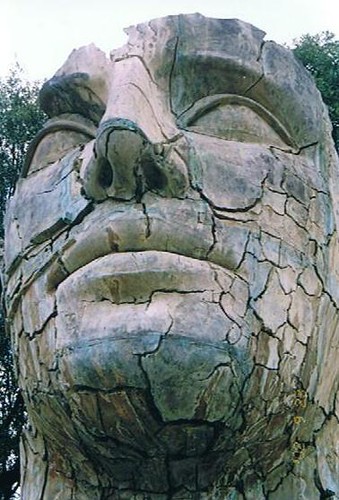|
|
🦋 Once again, "Observe"
Saramago takes another look at the epigraph, and makes me understand that I had been misreading it in a key way:
In a conversation yesterday with Luis Vázquez, closest of friends and healer of my ailments, we're talking about the film by Fernando Meirelles, just premiered in Madrid, even though we could not be in attendance, Pilar and I, as we intended to be, for a sudden bout of chills obligated me to retire to my chamber, or confined me to bed, in the elegant phrasing in use not so long ago. The conversation soon turned to the public's reactions during the exhibition and afterwards, highly positive according to Luis and to other trustworthy witnesses... We moved from there, naturally, to talking about the book and Luis asked me if we could look over the epigraph which opens it ("Si puedes mirar, ve, si puedes ver, repara"), for in his opinion, the action of seeing [ver] encompasses the action of looking [mirar], and therefore, the reference to looking could be omitted without bias to the meaning of the phrase. I could not come up with a reason to give him, but I thought that I should have other reasons to consider, for example, the fact that the process of vision occurs three stages, successive but in some manner autonomous, which can be stepped through as follows: one can look and not see, one can see and not observe, according to the degree of attention which we pay to each of these actions. We know the reaction of a person who, having just checked his wristwatch, returns to check it when, at that moment, somebody asks him the time. That was when light flooded into my head concerning the origin of the famous epigraph. When I was small, the word "observe", always supposing I already knew it, was not for me an object of primary importance until one day an uncle of mine (I believe that it is Francisco Dinis of whom I am speaking in this brief memoir) called my attention to a certain way of looking that bulls have, which almost always, he then demonstrated, is accompanied by a certain way of raising the head. My uncle said: "He has looked at you, when he looked at you, he saw you, and now it is different, he is something else, he is observing." This is what I told Luis, which immediately won the argument for me, not so much, I suppose, because it convinced him, but because the memory made him remember a similar situation. A bull looked at him as well, and again this movement of the head, again this looking which was not simply seeing, but observation. We were at last in agreement.
So, reparar is not "fix" as I had been thinking, but "observe" or "contemplate". The dictionary entry confirms that the word can be used in this sense. I'm still (like Luis) a bit dissatisfied with the relationship between mirar and ver in the first part of the epigraph.
posted evening of Thursday, March 5th, 2009
➳ More posts about Saramago's Notebook
➳ More posts about José Saramago
➳ More posts about Readings
➳ More posts about Translation
➳ More posts about Writing Projects
➳ More posts about Projects

Interesting! I should have considered that meaning, it's not uncommon to use reparar as observar.
posted morning of March 6th, 2009 by Jorge López
| |
|
Drop me a line! or, sign my Guestbook.
•
Check out Ellen's writing at Patch.com.
| |

